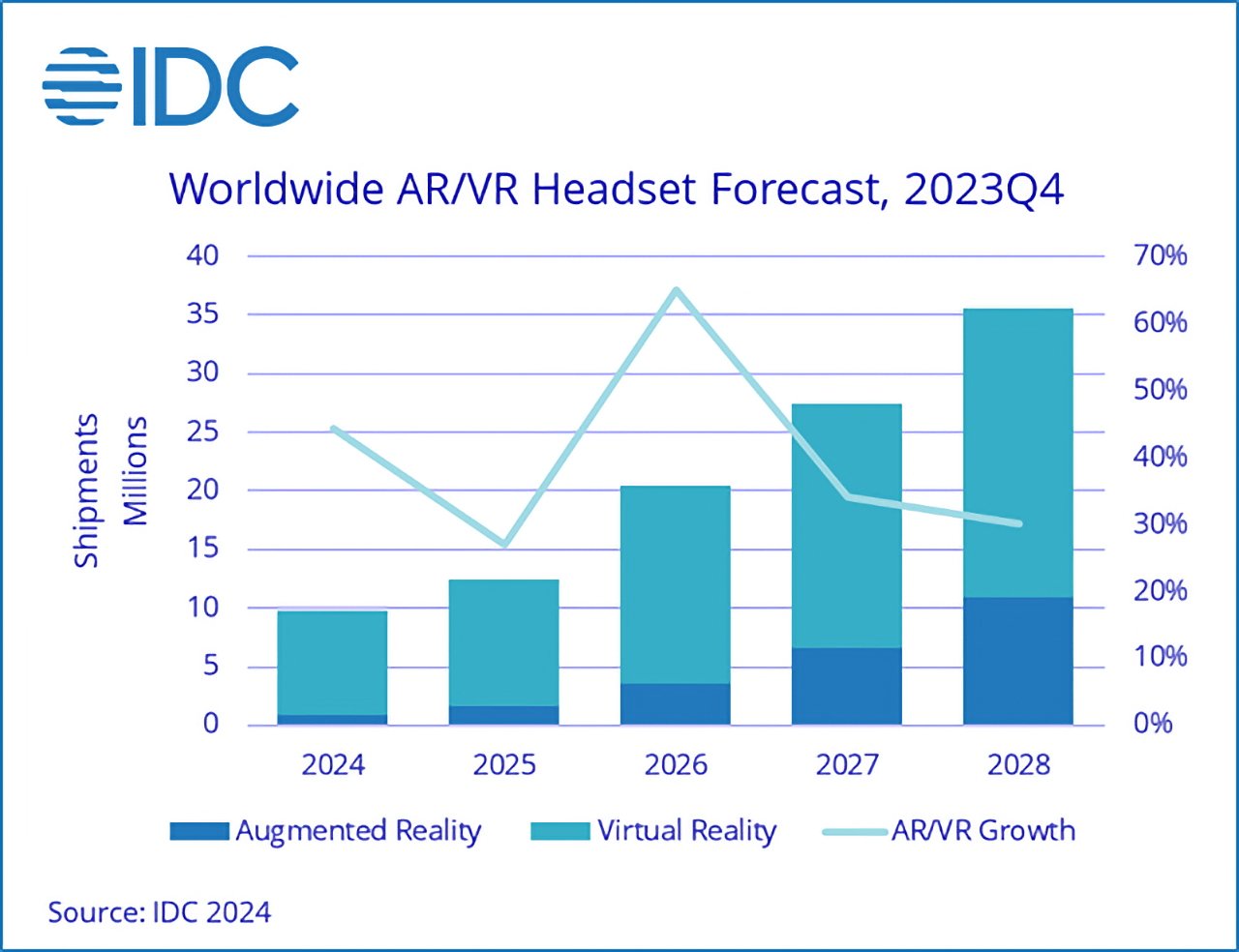New research says that even as the Apple Vision Pro remains too costly for most users, it will grow and its existence is already a boost for all headsets.
Mark Zuckerberg may argue that his firm’s Meta Quest 3 headset is the “better product, period,” but if anything makes its sales grow, it is going to be Apple. Launching the Apple Vision Pro has brought attention to the whole headset market, says IDC.
Plus Apple is changing the headset industry because of how successfully it has adopted what used to be a distant third option, the Mixed Reality device. Before the Apple Vision Pro, headsets tended to be either full Virtual Reality, or they overlaid some digital elements to make Augmented Reality.
“Mixed reality (commonly referred to as MR, the ability for users to toggle between augmented and virtual reality) has been the exception and not the norm,” says IDC research director Ramon T. Llamas, “but Apple has shone a bright light on MR with the Vision Pro.”
“Along with Apple, many companies such as Meta and others have already begun their journey, transitioning from VR to Mixed Reality,” said Jitesh Ubrani, research manager, “ultimately laying the groundwork for true AR experiences.”
IDC reports that global shipments for AR and VR headsets dropped 23.5% percent over 2023. However, it expects shipments to grow 44.2% to 9.8 million units by the end of 2024.
The research firm says that growth will be aided by unspecified new headsets launching before the end of the year. IDC expects that by 2028, VR headsets will grow to 24.7 million units, while AR will reach 10.9 million units.
IDC predicts the growth will come as headsets become used for creating content instead of purely consuming it. The firm says that AI will also increasingly be used in the creation of content for headsets.
Separately, Bloomberg has predicted that in the long term, the Apple Vision Pro will become an iPad-sized market for Apple. A second and potentially less costly Apple Vision Pro is not expected until mid-2025 at the earliest.






